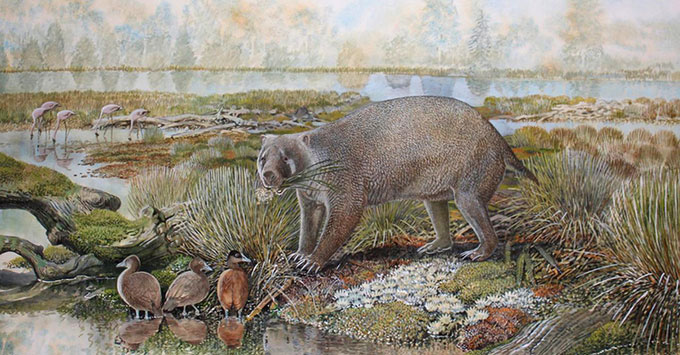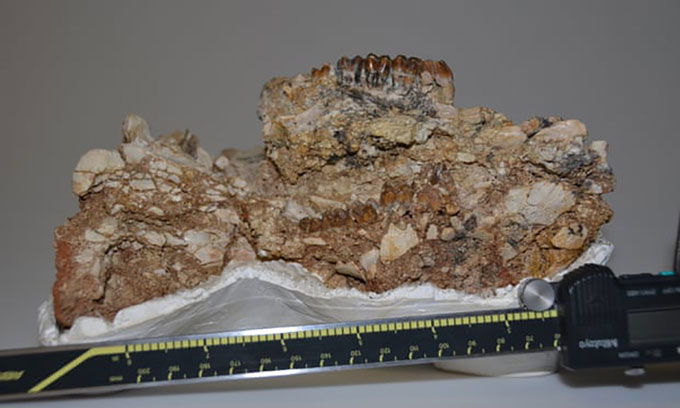Fossils reveal giant marsupials
Paleontologists have uncovered an unprecedented history of an animal known to be closely related to the marsupial koalas.
The creature named Mukupirna nambensis wandered in the forests of Australia 25 million years ago. They weigh about 150kg, the equivalent of a North American black bear and 5 times larger than the current male koalas.

photo of a new species of prehistoric mammal discovered in Australia. (Photo: Reuters)
Mukupirna's skull and some fossil fragments have been unearthed in the Eyre Lake basin since 1973 but have recently been carefully analyzed by experts from the University of New South Wales of Australia and the University of Salford in England.

Mukupirna's fossilized jaw bone. (Photo: Guardian ).
As described in Scientific Reports on June 25, Mukupirna nambensis is the closest prehistoric relative of the proboscis. They also eat plants and have some characteristics that indicate that life is well adapted to digging.
The massive muscle mass and the long, strong, curved claws make Mukupirna's foreleg an effective tool for digging roots and roots, their main source of food. Unlike the mundane nosebleed, this prehistoric mammal does not burrow due to its large size.
"Mukupirna is not a direct ancestor of the marsupial koalas but belongs to the evolutionary branch. Their common ancestor is probably also a digger , " said lead researcher Robin Beck, a professor at Salford University. strong.
- Giant fossils and the fear of prehistoric creatures
- Detection of giant trilobite fossils in Australia
- Extract DNA of two ancient kangaroo species
- 7 biggest monsters of all time
- Discover dinosaur fossils like real Loch Ness monsters
- Fossil animal feces reveal a secret ancient ecosystem
- Close up of fossils of crocodiles, elephants, giant prehistoric birds
- Exposed strange creatures weighing 1 ton, clawed dagger, tapir face
- Two meter long python swallowed marsupials in the garden
- Animal fiends 'love' is crazy, intense to death
- Detection of giant penguin fossils in New Zealand
- Video: Grasping the head of a animal with a bag on the top of the tree to swallow
 Discovered an ancient centipede fossil 99 million years old
Discovered an ancient centipede fossil 99 million years old Discovered bat-like dinosaurs in China
Discovered bat-like dinosaurs in China Discovered a 200-year-old bronze cannon of the coast
Discovered a 200-year-old bronze cannon of the coast Discover 305 million-year-old spider fossils
Discover 305 million-year-old spider fossils